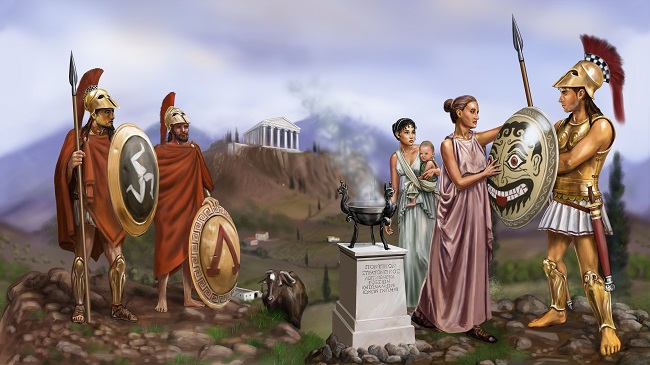Ancient Sparta became famous worldwide for the bravery of its inhabitants. For centuries, this city was the center of military power in Ancient Greece, and the heroic stand of the 300 Spartans has become legendary. However, this legend has historical evidence, as discovered by archaeologists.
Facts About Sparta:
- According to legend, the founder of this city-state was Lacedaemon, the son of the god Zeus and the Pleiad Taygete. He was married to a woman named Sparta, after whom he named the city he built.
- In Ancient Greece, there was a currency unit called the obol, which also served as a weight measure, roughly equal to 0.7 grams. In Athens and other city-states, obols were silver coins, but in Sparta, they used bulky and impractical iron rods as obols. These rods were much heavier than coins, reflecting the fact that iron was cheaper than silver. This was done to discourage Spartans from seeking wealth and to reduce theft and bribery.
- Spartan men preferred to wear long hair, as they believed it made them look more masculine.
- Contrary to popular myth, Spartan warriors did not fight bare-chested. They always wore armor.
- Spartans did not engage in any agricultural work. Farming was carried out by helots—people with the social status of serfs. Helots were also Greeks but occupied a lower social position in Spartan society.
- The Spartan Assembly consisted of citizens who were at least 30 years old. Voting was done by shouting approval or disapproval, without counting votes, following the principle of “the louder you shout, the more right you are.”
- Children in Sparta were considered the property of the state. Immediately after birth, they were subjected to a thorough examination, and the weak or deformed were left in the forest. Healthy children were returned to their parents, who raised them until the age of 6. After that, the children were taken by the state for education.
- There were always two rulers in Ancient Sparta. While one king was leading the army in war, the other would oversee the city.
- Contrary to popular belief, Spartans were not masters of the art of war; for example, they did not know how to lay siege to fortified cities or fight at sea. They were trained only in fighting on foot, “one-on-one” and in a phalanx formation.
- No Spartan was allowed to eat at home. Everyone, including the kings, ate in public mess halls.
- In Ancient Sparta, a coward was branded with shame, and his children were forbidden to marry or have children. It was almost impossible to erase this disgrace.
- In the famous Battle of Thermopylae, far more than 300 Spartans fought on the Greek side. In fact, the total number of Greek soldiers was about 6,000, and they held off a Persian army of 200,000 for two days.
- Intellectual pursuits were not encouraged in Sparta. People who tried to engage in them were declared cowards and exiled. Throughout its centuries of existence, Sparta did not produce a single philosopher, orator, historian, or poet.
- No Spartan could personally own slaves. All helots were the property of the state, which then assigned them to individuals “for use.”
- Young Spartan warriors were forbidden to wear clothes until the age of 12 so they would not grow accustomed to comfort.
- Around the age of 30, a Spartan warrior underwent the final stage of training, which granted him the right to leave the barracks and lead a private life. From this point on, he served the state and war, could not trade or farm, and was expected to marry and have children.
- Ancient Sparta encouraged its citizens to spy on slaves. Young Spartans were specifically sent to eavesdrop on helot conversations, and anyone who seemed suspicious was to be killed. The strongest and most courageous slaves, who might resist, were secretly eliminated.
